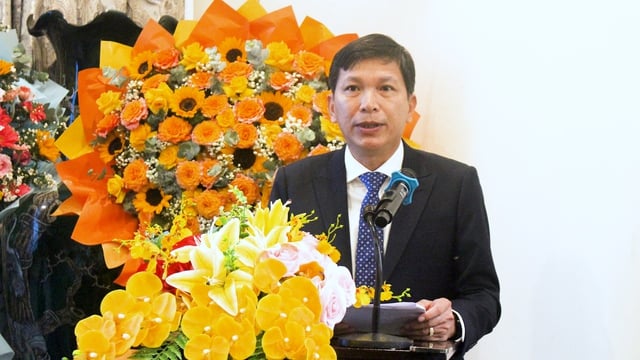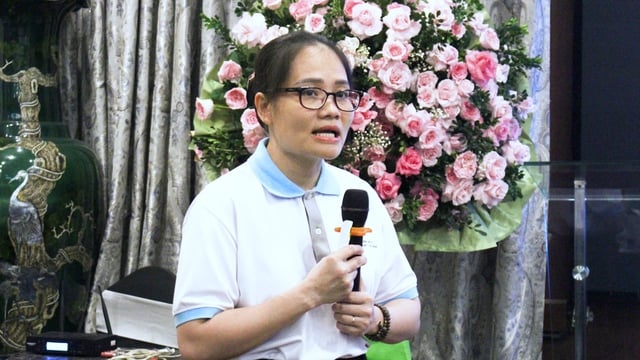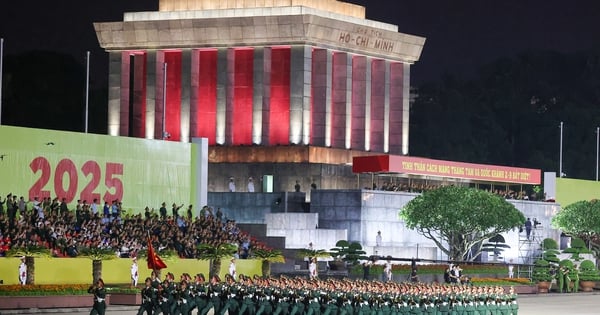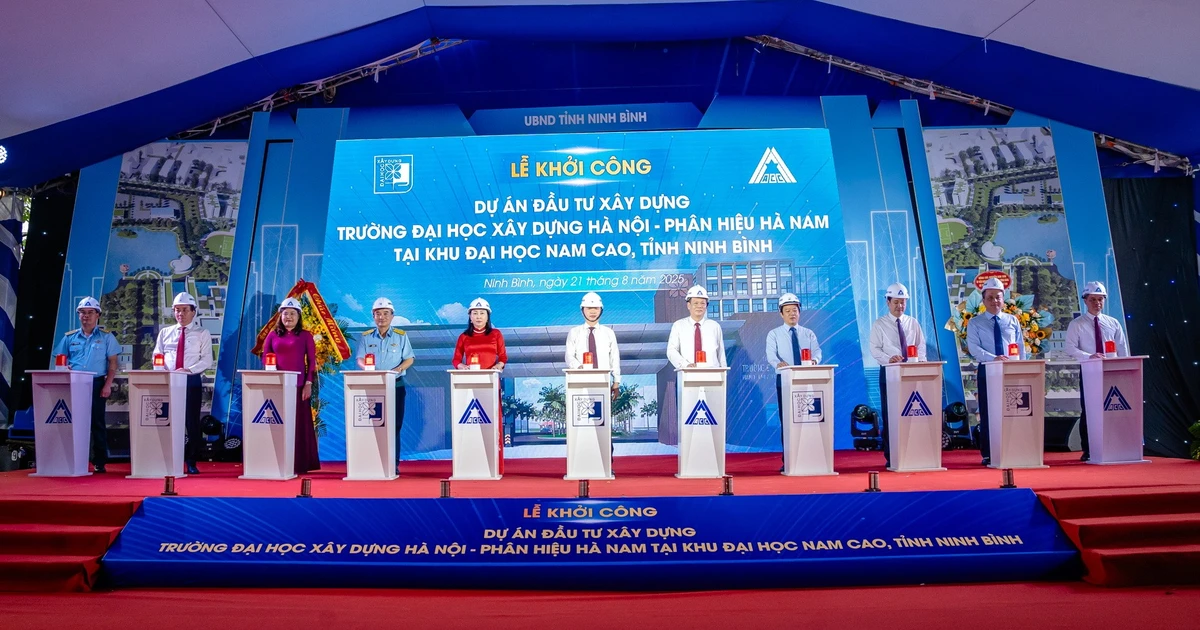The above information was stated at the "Seminar and Announcement Ceremony of the Alliance on Research and Training of Semiconductor and Electronics Human Resources" co-organized by the Department of Science and Technology of Ho Chi Minh City and the Ho Chi Minh City Semiconductor Industry Association (HSIA) on August 21.
Shortage of 1 million semiconductor engineers globally
Speaking at the seminar, Mr. Nguyen Huu Yen, Deputy Director of the Department of Science and Technology of Ho Chi Minh City, emphasized that the semiconductor industry has emerged as the lifeblood of the global economy , and is the core foundation for most high-tech fields such as artificial intelligence (AI), IoT (The Internet of Things), big data and smart electronic devices.
According to the Vietnam Semiconductor Industry Development Strategy to 2030, with a vision to 2050, the country aims to train at least 50,000 high-quality human resources, with Ho Chi Minh City alone responsible for about 9,000 human resources in the fields of microchip design, chip manufacturing and related technologies.

According to Mr. Nguyen Huu Yen, Deputy Director of the Department of Science and Technology of Ho Chi Minh City, one of the current challenges in the semiconductor field is the shortage in quantity and quality of human resources.
PHOTO: YEN THI
Mr. Yen also frankly pointed out the challenges in this field such as: Shortage in quantity and quality of human resources, large capital demand for infrastructure investment; need for breakthrough mechanisms and policies to attract talents and investment projects; the connection between the state, schools/institutes and enterprises is not really tight and effective as expected and it is necessary to expand that connection to the inter-regional and national scale.
Mr. Le Truong Duy, Director of the Center for the Fourth Industrial Revolution, cited a report by Deloitte, saying that the global semiconductor market is expected to exceed 1,000 billion USD by 2030, while the world is facing a shortage of more than 1 million engineers in this field.
Mr. Duy stated that the semiconductor industry is becoming a strategic pillar of every modern economy. He cited that many leading technology corporations such as Samsung, Amkor, NVIDIA, and Qualcomm have chosen Vietnam as a strategic destination, while domestic enterprises such as Viettel have also begun to develop microchip design.

Mr. Le Truong Duy cited data showing that the world is facing a shortage of more than 1 million engineers in the semiconductor field.
PHOTO: YEN THI
“Tripartite Linkage” to Develop High-Quality Human Resources
The presentation “Challenges of the world’s semiconductor technology and the current status and development direction of Vietnam’s semiconductor and electronics industry” by Dr. Duong Minh Tam, Ho Chi Minh City Semiconductor Technology Association; Dr. Vu The Dang, Osaka Metropolitan University (Japan); Associate Professor, Dr. Nguyen Van Hieu, Center for Intellectual Property and Technology Transfer (Ho Chi Minh City National University), stated that Vietnam’s semiconductor and electronics industry is facing golden opportunities to make a breakthrough, but also faces many challenges to overcome.
The semiconductor industry requires highly skilled workers with advanced knowledge of mathematics, physics, and circuit design skills. However, a major challenge today is that new graduates often do not meet these rigorous professional requirements.
According to Master Nguyen Phuc Vinh, Senior Technical Director of Synopsys Vietnam, in reality, Vietnam only has about 7,000 microchip engineers nationwide, while each year Ho Chi Minh City only provides 400-500 students for microchip companies, which is less than 10% of the demand according to the national strategy.
Mr. Vinh analyzed that the number of lecturers with experience in “tape-out chip” (completing the design for a microchip) in Ho Chi Minh City is currently less than 10 people; the Vietnamese microchip market is still young, with slow growth due to large capital requirements and investment time.
According to Master Vinh, the urgent solution is to implement a "3-party linkage" model including: the state, schools, and businesses - to implement short-term training courses to improve professional knowledge for students and lecturers. Training ensures output combined with business needs to maintain effective human resource development.
Presenting her paper, Associate Professor, Dr. Vu Thi Hanh Thu, University of Natural Sciences (Ho Chi Minh City National University), also emphasized that the demand for human resources in the semiconductor industry is becoming extremely urgent. “In reality, the current university training program still has limited time for practice, internship and real-life experience, leading to a certain gap between the capacity of graduates and the requirements of businesses,” Associate Professor, Dr. Thu added.

According to Associate Professor, Dr. Vu Thi Hanh Thu, the current university training program still has limited time for practice, internship and real-life experience.
PHOTO: YEN THI
Associate Professor Dr. Thu also said that the Ho Chi Minh City Semiconductor Industry Association (HSIA) aims to organize 5-6 training courses each year with thousands of students from 2025-2030 to supplement and improve practical capacity for human resources in the semiconductor industry.
Associate Professor, Dr. Thu also proposed a close cooperation mechanism between 3 parties: enterprises - schools - HSIA, to effectively design and implement short-term training courses according to specific orders of enterprises.
In addition, experts also made many proposals to develop human resources for the semiconductor industry such as: expanding the training program for microchip engineers at technical universities; sending students and lecturers to study in countries with developed semiconductor industries such as Japan, Korea, and the US; building a mechanism for close cooperation with businesses to ensure output, create internship and applied research opportunities for students. Proposing open-door policies and incentives to support semiconductor businesses to expand investment in the Vietnamese market.
Establishment of the Alliance for Research and Training of Human Resources in Semiconductors and Electronics for the period 2025-2030 (ARTSeMi)
The Alliance was established based on the proposal of the Ho Chi Minh City Semiconductor Industry Association (HSIA), aiming to gather businesses, training facilities, research institutes and related organizations to coordinate the development of the semiconductor and electronics industry in Vietnam.
The ARTSeMi Alliance has 15 participating units in cooperation, research, training and human resource development, including universities, research institutes and enterprises.
The Alliance focuses on main contents such as sharing and cooperation in exchanging technical and technological information; coordinating registration and implementation of research topics; co-publishing science and registering intellectual property; participating in training and developing human resources; proposing applications, transferring technology and promoting international cooperation.
According to Mr. Nguyen Huu Yen, the alliance is expected to become a common home where members cooperate, share responsibilities, promote scientific research, transfer technology and especially train a generation of golden human resources for the semiconductor industry of Ho Chi Minh City.
Source: https://thanhnien.vn/don-co-hoi-ngan-ti-tu-nganh-ban-dan-viet-nam-tang-toc-dao-tao-nhan-luc-185250821180828004.htm




























![[Photo] An Phu intersection project connecting Ho Chi Minh City-Long Thanh-Dau Giay expressway behind schedule](https://vstatic.vietnam.vn/vietnam/resource/IMAGE/2025/8/21/1ad80e9dd8944150bb72e6c49ecc7e08)


































![[Photo] Politburo works with the Standing Committee of Hanoi Party Committee and Ho Chi Minh City Party Committee](https://vstatic.vietnam.vn/vietnam/resource/IMAGE/2025/8/21/4f3460337a6045e7847d50d38704355d)
































Comment (0)